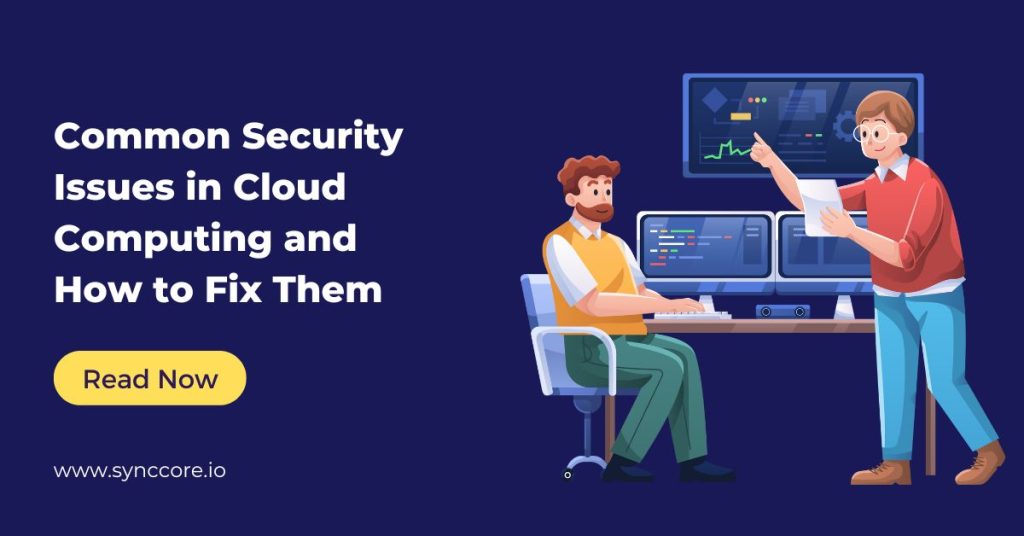Table of Contents
Common Security Issues in Cloud Computing
Almost every business, albeit to varying degrees, has embraced cloud computing for use within its operations. On the other hand, the increased adoption of cloud computing makes it necessary to ensure that the organization’s cloud security plan is adequate to protect against the most significant dangers posed by cloud security.

The top five security concerns in cloud computing are listed below, along with suggestions for how multi-cloud solutions can help.
1. Misconfiguration
Misconfiguration continues to be the main reason for cloud data breaches. A recent analysis found that 88% of all data breaches in 2020 were caused by human error.
As a result, defense teams need to be knowledgeable about cloud computing and IT operations staff must receive support and training. Using cloud-native technologies to monitor for common configuration errors, such as storage bucket issues, can also be useful.
2. Data Breaches
Several recent data breaches have been attributed to the cloud. A company’s market value, financial stability, and reputation can all suffer in the event of a data breach, causing an irreparable loss of value.
Firms can benefit in this area from having a solid incident response plan that has been tried and tested as well as from knowing the importance and impact of their data.
3. Encryption
Although encryption does not in and of itself prevent breaches, it provides an additional level of security so that data will not be quickly compromised in the event of a threat. Although only an additional layer of security, this feature is crucial to multi-cloud security. Automated tools can be used to check the encryption status of cloud storage buckets.
In the end, it is best for everyone if encryption is used by default for data stored in the cloud.
4. Insufficient Cloud-based Architecture and Strategy for Security
Too many businesses rush into the cloud without laying a strong design and strategy foundation. Customers thinking about switching to the cloud need to understand the risks involved, how to proceed safely, and how the shared responsibility model functions. If customers don’t plan, they run the risk of suffering financial losses, reputational harm, and legal and compliance issues.
5. Insider Threats
There are numerous risks associated with employees and others using an organization’s network, not just those related to the cloud. Whether negligent or malicious, employees, contractors, and partners can lead to data loss, system outages, diminished customer trust, and data breaches.
Consumer accountability, insider threats involving stolen or leaked data, credential problems, human errors, and cloud misconfigurations are a few of the things that need to be managed. To further defend themselves from cyberattacks, businesses must complete security awareness training, correct incorrectly configured cloud servers, and limit access to critical systems.
Conclusion
Although there are many advantages, risks, and concerns associated with the cloud, traditional security technologies and tactics typically cannot secure cloud-based infrastructure effectively due to the significant differences between it and an on-premises data center.
You might achieve the best of both worlds by implementing a thorough and unified security strategy for hybrid and multi-vendor cloud environments. With this choice, you can create, manage, and maintain a secure cloud environment quickly and easily.
Read More:
Cloud Computing for Marketing: How the Cloud Helps Marketers in 2023?



